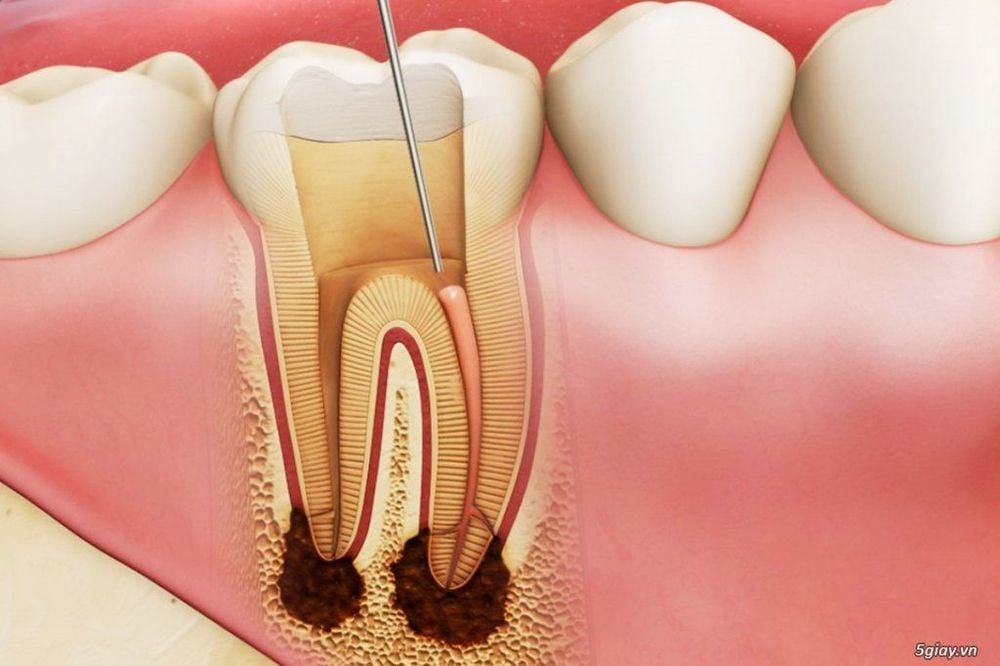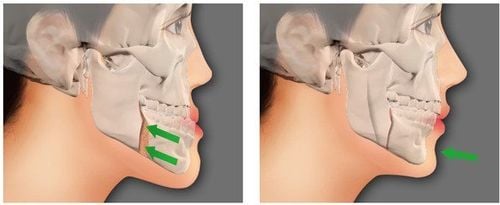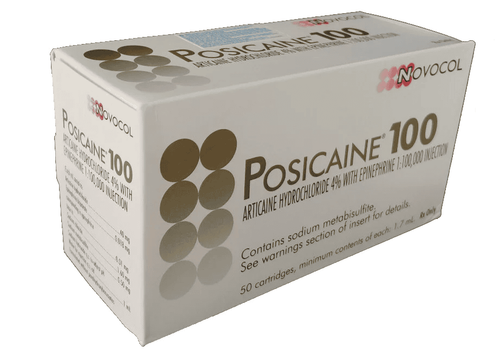This is an automatically translated article.
A root canal is a dental procedure used to treat a tooth with a damaged pulp without having to remove it. In the past, many people did not want to have a root canal, because it was known to be a painful and very uncomfortable procedure. However, with the development of modern science and technology, it has made it possible to get the tooth pulp painless.1. What is root canal?
Root canal treatment or root canal treatment is a dental procedure that involves removing the soft central part of a tooth, the pulp. The pulp is made up of connective tissue, nerves, and blood vessels that help teeth grow.In most cases, your dentist will perform a root canal while you are under local anesthesia.
2. Is the root canal painful?
Root canal procedures may sound intimidating, but with today's technology, it's usually not much different from filling a cavity. Therefore, root canal treatment is painless or painless because the dentist will use local anesthesia during the procedure.If you have a root canal and you have facial swelling or a fever, your doctor may prescribe antibiotics first to kill the infection. This can also help relieve pain.
The root canal process itself is similar to getting a large filling, but it will take longer. Your mouth will be numbed while the dentist cleans the damaged teeth, disinfects the roots, and then fills them in.
The dentist will use a rubber dam around the root canal tooth. This will help prevent any infected material from spreading to the rest of your mouth.
Your mouth may feel sore or weak after a root canal. Your dentist may suggest you take an over-the-counter pain reliever such as acetaminophen (Tylenol) or ibuprofen (Advil).
A 2011 review of 72 studies of patients with pulpitis looked at pain before, during, and after treatment. The analysis showed that pain was higher before treatment, then it decreased moderately within one day of treatment and significantly decreased to a minimum within one week after root canal collection.

Với công nghệ nha khoa hiện nay thì lấy tủy răng không đau là hoàn toàn có thể
3. What you need to know about painless tooth extraction
Painless root canal therapy may sound like a utopia, but new techniques are making it a reality for many dental patients. Painless root canal therapy involves avoiding the root canal completely by using adhesives to seal the exposed nerve.New York dentist Michael Teitelbaum says the procedure requires only one visit to the dentist and is much less expensive than traditional root canals, but it's also controversial and under-used. a lot of.
Dr Teitelbaum believes that 80% of people who need a root canal are candidates for an alternative, but almost no one gets it. Partly because few dentists know about it and because the failure rate is so high with previous generation sealants.
Root canal is done when bacteria enter the pulp through a hole or crack, damaging the nerves located inside the tooth. The bacteria cause an infection, which eventually kills the nerves. However, a root canal can be avoided if the nerve is not already infected.
There is bonding technology that allows doctors to seal the nerve using the same liquid plastic that contact lenses are made of, says Dr. Teitelbaum. It hardens to form a seal that covers the nerve as well as the tooth.
Although this procedure, known as direct pulp capping, has been around for decades, the use of traditional adhesives results in a long-term failure rate of up to 80%. Teitelbaum says he has done about 200 direct root canals with newer fillings, with a 92% success rate.
In summary, painless root canal therapy is one of many new strategies currently being simplified in the treatment of diseased teeth, which requires only one visit to the dentist and is much less expensive than conventional methods. traditional root canal method.
Please dial HOTLINE for more information or register for an appointment HERE. Download MyVinmec app to make appointments faster and to manage your bookings easily.
Reference sources: webmd.com, healthline.com












